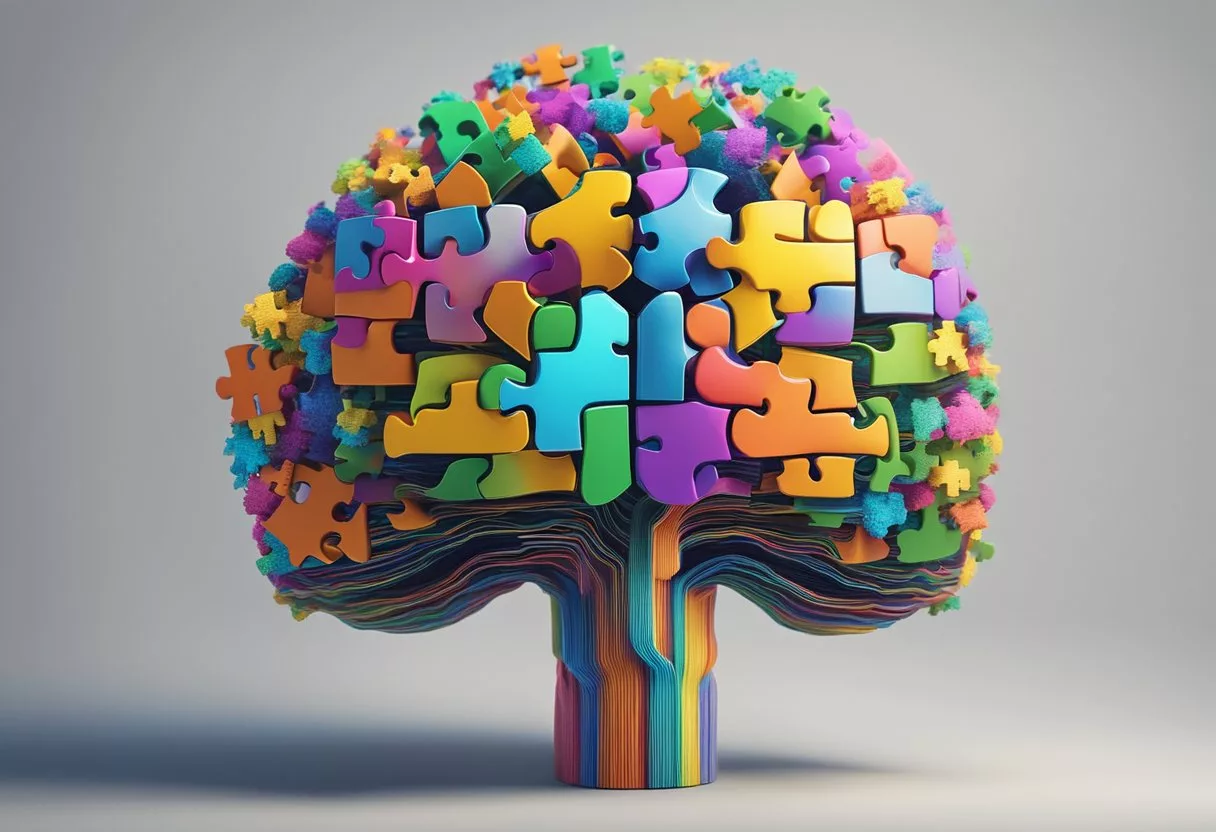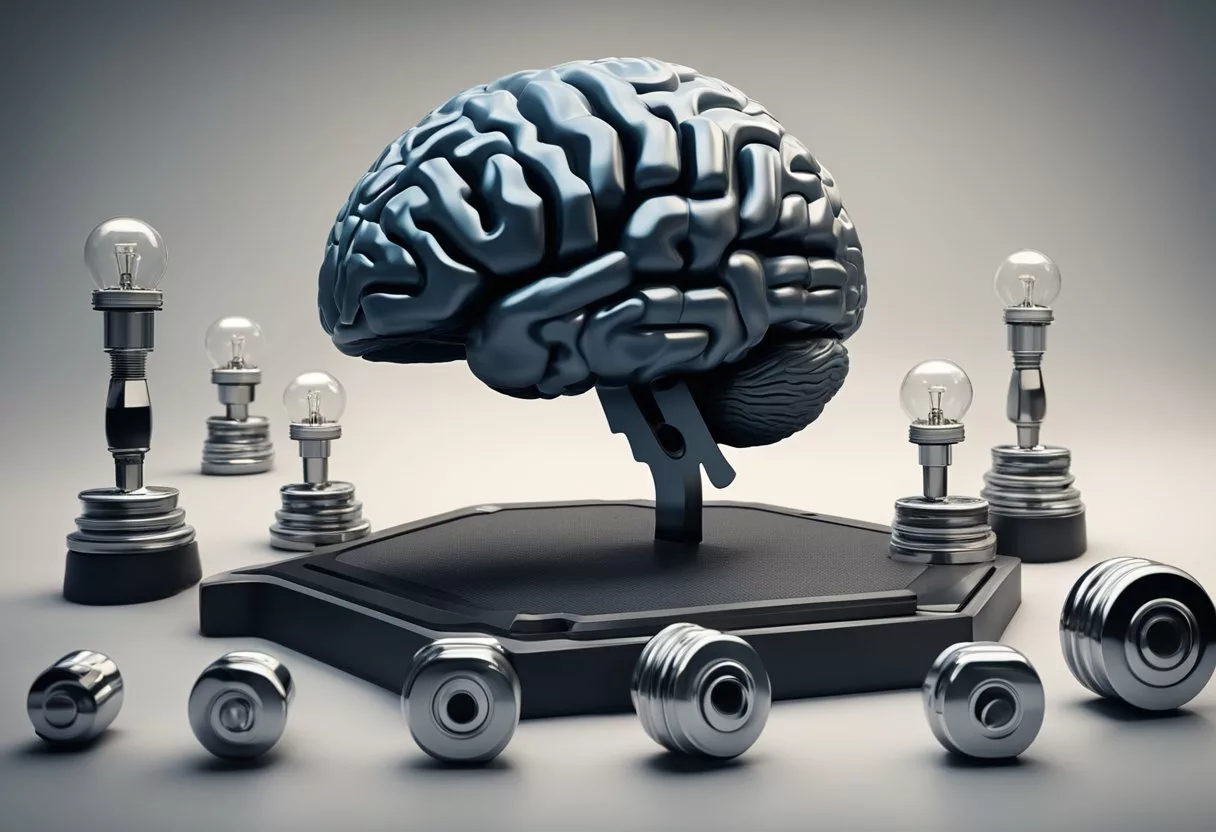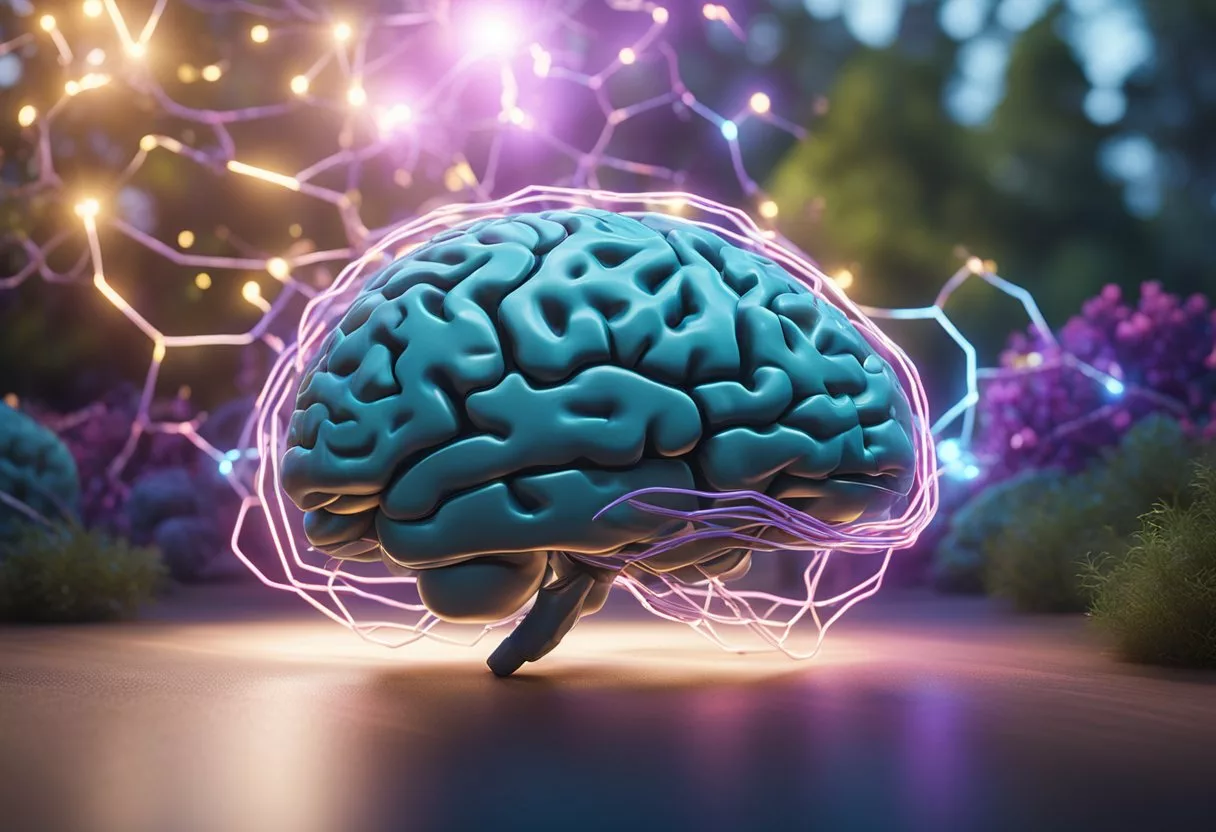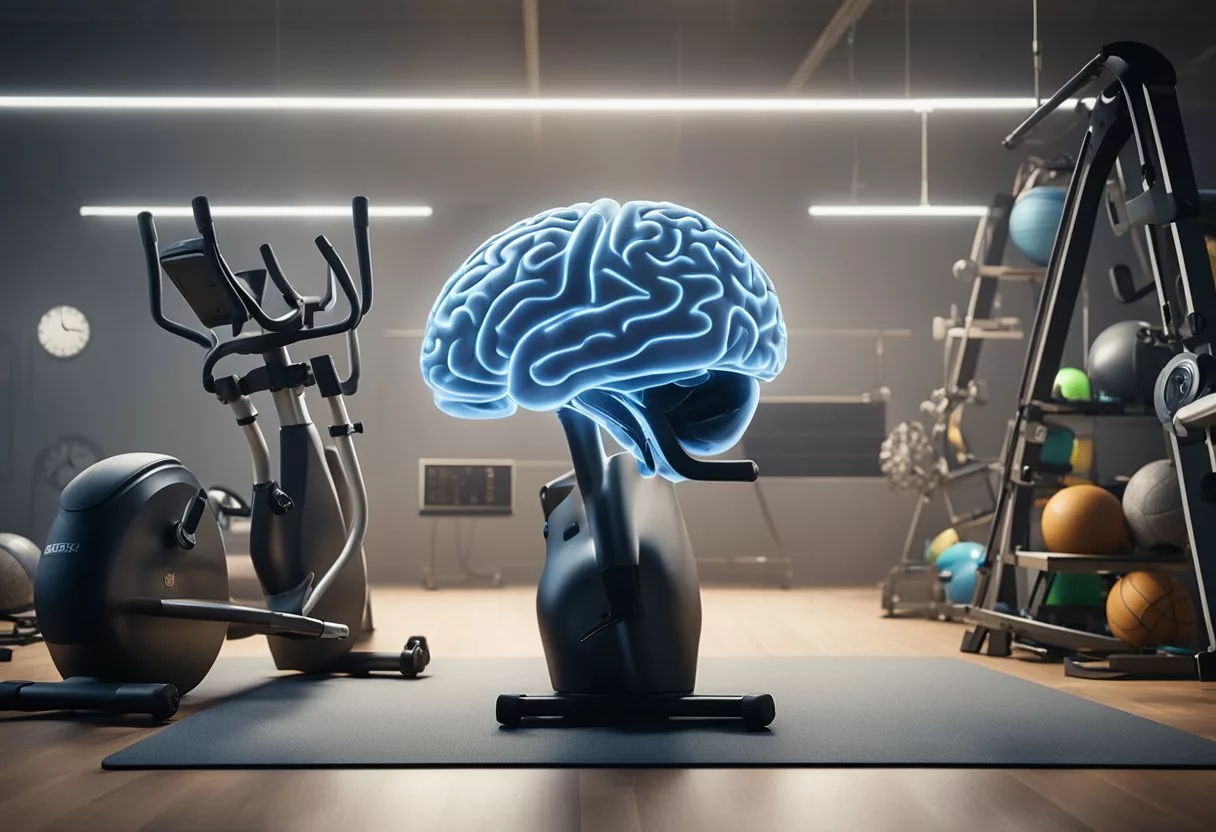Physical activity is essential for maintaining a healthy body and also plays a crucial role in supporting and enhancing brain function. Scientific research has established that exercise can have a profound impact on cognitive abilities. It can impact everything from memory to problem-solving skills.
Various types of physical exercise contribute to brain health by improving blood flow, reducing the risk of chronic diseases that impede cognitive function, and helping to form new neural connections.

Incorporating physical exercise into daily life is beneficial across all ages, from boosting development in young brains to delaying cognitive decline in older adults. Mental exercises that complement physical training can further enhance cognitive benefits, as can a diet optimized for brain health.
Understanding the brain-exercise connection is critical for devising the most effective fitness regimes. Ongoing scientific investigations continue to shed light on how different forms of exercise influence the brain. Overcoming barriers to physical activity and ensuring consistent engagement in exercise are key to maximizing the brain-protective effects.
Key Takeaways
- Regular physical exercise contributes significantly to cognitive health and brain function.
- A diverse exercise regimen, paired with mental challenges and a healthy diet, can optimize brain health.
- Scientific evidence supports the integration of consistent exercise into everyday life to prevent cognitive decline.
Understanding the Brain-Exercise Connection

Physical exercise is more than just a boon for physical health; it is also essential for maintaining and enhancing cognitive function and brain health. Specific exercises have been shown to positively affect the brain’s structure and function.
Neuroplasticity and Cognitive Health
Neuroplasticity refers to the brain’s ability to reorganize itself by forming new neural connections throughout life. Regular physical activity benefits cognitive health by facilitating this neural adaptability. Exercises that demand both physical engagement and mental focus, such as dance or coordination-based sports, are highly effective in maintaining and improving cognitive health.
The Role of Blood Flow and Oxygenation
During exercise, increased heart rate and blood flow lead to greater oxygenation in the brain. This plays a critical role in enhancing cognitive function as it aids in the efficient delivery of nutrients necessary for neuron survival and function. The hippocampus, a region of the brain crucial for memory and learning, especially benefits from this increased blood flow and oxygenation.
Exercise-Induced Neurogenesis
Exercise contributes to neurogenesis, the production of new neurons in the brain. This growth primarily occurs in the hippocampus and can improve brain plasticity, leading to better memory and learning. Regular aerobic exercise, like running or cycling, is known to stimulate the production of brain-derived neurotrophic factor (BDNF), a protein that supports neuron growth and protection.
Types of Exercises for Brain Health

When aiming to enhance brain health, one should consider incorporating a variety of exercises that target not only physical well-being but also cognitive function. These exercises range from those improving cardiovascular health to those challenging balance and coordination.
Aerobic Exercise and Brain Volume
Aerobic exercise, also known as cardio, is a key player in increasing brain volume, particularly in the areas associated with memory and executive function. Studies indicate that engaging in regular aerobic activities like running, swimming, or cycling can lead to increased hippocampal volume, which is crucial for memory formation.
Strength Training and Cognitive Benefit
Resistance or strength training has been shown to offer cognitive benefits. Incorporating exercises like weight lifting or bodyweight exercises can enhance executive functions, such as multitasking, and has been associated with improved memory. The positive impact of strength training is especially significant in older adults, suggesting that it can be protective against age-related cognitive decline.
Flexibility and Balance Training
Activities such as yoga and tai chi don’t just promote flexibility; they also improve balance and can contribute to cognitive health. The slow, deliberate movements required by these activities demand concentration and mental engagement, which can foster neural plasticity and brain health in aging.
Coordination and Agility Activities
Finally, coordination and agility activities—like dancing and sports that require quick changes in direction—boost brain function. These types of physical activity can enhance one’s ability to process complex information quickly, leading to better performance on tasks requiring attention, planning, and strategizing. The neuromotor challenges presented by activities that emphasize coordination are linked to aerobic exercise effects on cognitive function.
Mental Exercises that Complement Physical Training

Physical exercise is known to boost cognitive function, but integrating mental exercises into a fitness regimen can optimize overall brain health. Certain activities are particularly beneficial for stimulating the mind in tandem with physical training.
Puzzles and Problem Solving
Immersing oneself in puzzles such as chess and jigsaw puzzles strengthens problem-solving skills and enhances cognitive abilities. Incorporating these puzzles into one’s routine can reinforce strategic thinking and elevate mental dexterity. Card games, demanding both strategy and memory work, also serve as excellent brain exercises.
- Example Activities:
- Playing card games such as bridge or poker
- Completing jigsaw puzzles with increasing complexity
- Engaging in regular chess games to boost strategic thinking
Creative Arts and Brain Stimulation
Creative activities like drawing, painting, and knitting engage the brain’s creative centers, promoting neural connections and improving fine motor skills. These forms of expression not only stimulate different brain areas but also offer a therapeutic and relaxing complement to physical exercises.
- Benefits:
- Drawing: Enhances visual analysis and attention to detail.
- Painting: Stimulates creativity and can improve emotional regulation.
- Knitting: Boosts pattern recognition and concentration.
Learning New Skills and Languages
Acquiring new skills or a new language can significantly enhance brain function. Studies show that the process of learning stimulates neuroplasticity and bilingualism has been linked to improved cognitive function. Learning a new language or skill such as a musical instrument or a new sport can create fresh neural pathways and aid in mental agility.
- Key Pursuits:
- Language Learning: Encourages problem-solving and multitasking.
- New Skills: Cultivates adaptability and enhances memory retention.
Psychological Benefits of Exercise

Engaging in physical exercise is not just beneficial for one’s physical fitness, but it also holds numerous advantages for psychological well-being. These benefits range from reducing stress and enhancing mood to improving sleep quality.
Stress Reduction and Mental Health
Exercise induces a natural anti-anxiety effect, as it prompts the body to release endorphins that act as natural painkillers and mood elevators. Studies suggest that moderate exercise can be comparable to meditation in its ability to reduce stress. The psychological benefits of an active lifestyle also encompass improved mental health, with activities like running or yoga reducing symptoms of depression and anxiety.
Mood Improvement and Creativity
Physical activity has been linked to enhanced mood and increased levels of creativity. The increased blood flow to the brain not only lifts mood but can also provide a platform for heightened creative thinking. Different forms of exercise can lead to various types of cognitive stimulation. For instance, aerobic exercises boost creativity by enhancing divergent thinking whereas activities like weightlifting might improve convergent thought processes.
Impact on Sleep Quality
Regular physical exercise is instrumental in promoting better sleep patterns. Engaging in consistent exercise routines helps in regulating the circadian rhythm and decreases the incidence of sleep disorders. The changes in brain activity following exercise training contribute to deeper, more restful sleep and can alleviate issues such as insomnia, therefore providing a significant boost to overall well-being.
Exercise and Aging

Engaging in regular physical activity is a cornerstone for maintaining brain health as one ages. It can mitigate age-related cognitive decline and may reduce the risk of developing dementia, including Alzheimer’s disease. Consistent exercise habits are essential for maximizing these protective benefits.
Delaying Cognitive Decline
Physical exercise plays a significant role in slowing down cognitive decline that often comes with aging. Studies have shown that aerobic activities, such as walking or swimming, can lead to improvements in the brain’s executive functions and memory, even for individuals as they get older. The benefits of physical exercise on the aging brain highlight the positive impact of such activities on the prefrontal cortex, which is crucial for cognitive functions.
Physical Exercise and Dementia Prevention
Regular physical activity has been widely researched for its capacity to lower the risk of dementia, including Alzheimer’s disease.
The protective effects are evident when exercise increases cerebral blood flow, particularly to areas like the hippocampus that are vulnerable to age-related atrophy. For more details, the scientific perspective on why your brain needs exercise can provide in-depth understanding about the relationship between physical fitness and brain health.
The Importance of Consistency in Exercise Habits
To achieve the brain-protecting benefits of exercise, consistency is key.
Establishing a regular routine of physical activity contributes to sustained improvements in cardiovascular and cognitive health. This consistency can help reduce the risk of cognitive decline and memory loss associated with aging.
Insight into exercise frequency and brain health is further discussed in the context of aerobic exercise improving brain function among older adults.
Integrating Exercise into Daily Life

Incorporating physical exercise into the daily routine is crucial for brain health.
Establishing regular exercise regimens, seeking guidance from healthcare providers, and engaging with friends and family can transform sedentary lifestyles into active, healthy ones.
Exercise Regimens and Prescription
Establishing a consistent exercise regimen is essential for integrating exercise into daily life.
A prescription for exercise, tailored by healthcare professionals, typically includes cardiovascular, strength, and flexibility components. These tailored regimens take into account an individual’s current fitness level and health status, ensuring the activities are safe and effective.
The Role of Physical Therapists and Healthcare Providers
Physical therapists and other healthcare providers play a vital part in helping individuals incorporate exercise into their daily lives.
They assess the individual’s capabilities, set realistic goals, and provide education on the importance of maintaining an active lifestyle. Their expertise is especially valuable for individuals transitioning from a sedentary lifestyle to a more physically active routine.
Incorporating Exercise with Friends and Family
Exercise can be more enjoyable and sustainable when shared with friends and family.
Group activities not only foster social connections but also provide a support system and encourage commitment to exercise routines. Whether it’s a family hike, a friendly game of basketball, or a group fitness class, involving others makes exercise a fun and integral part of daily life.
Scientific Research and Evidence

The interaction between physical exercise and enhanced brain function is substantiated by a breadth of scientific studies, revealing consistent findings on cognitive improvements and memory enhancement.
Studies on Exercise and Brain Function
Researchers have established a link between regular physical activity and improvements in brain function across various age groups.
For instance, a study highlighted by Scientific American suggests that exercise promotes brain health by improving blood flow and increasing the complexity of dendritic connections.
Another critical piece of evidence from the New England Journal of Medicine underlines that regular physical activity can lead to lower rates of dementia and slow the progression of neurodegenerative diseases.
Research on Memory and Cognitive Function
Neuroscientists have examined the effects of exercise on cognitive domains such as memory and executive functions.
Findings published in Nature provide converging evidence that aerobic exercise significantly impacts cognitive function, suggesting that it can be a preventive strategy for cognitive decline.
The Centers for Disease Control and Prevention endorses physical activity as essential for maintaining and improving cognitive function. Studies support that dynamic engagement in physical exercises enhances memory and other intellectual abilities across all age groups.
Nutrition and Exercise for Optimal Brain Function

Achieving optimal brain function hinges on a synergistic approach that pairs targeted nutrition with regular physical activity. Together, these elements fortify mental sharpness and overall health by promoting robust blood circulation, muscle strength, bone density, and the vitality of nerve cells.
The Interplay between Diet and Physical Activity
Diet and exercise contribute to cognitive health much like two gears in a well-oiled machine.
Proper nutrient intake fuels the body for exercise, while physical activity enhances the body’s ability to absorb and utilize these nutrients. Engaging in regular exercise can increase blood flow to the brain, which delivers oxygen and vital nutrients that support the function and growth of nerve cells.
Studies suggest that an active lifestyle encourages not just physical health but also cognitive preservation. Routines involving both aerobic and resistance training show benefits in multiple brain regions.
Nutrients That Support Cognitive Health
To bolster cognitive function, certain nutrients play pivotal roles:
- Proteins and Amino Acids: Building blocks for neurotransmitters that are crucial for sending signals between nerve cells.
- Antioxidants: Combat oxidative stress which can damage brain cells; found in berries and leafy greens.
- Omega-3 Fatty Acids: Essential fats like DHA support the structural integrity of brain cells, available in fish and flaxseeds.
- B Vitamins: Aid in homocysteine regulation, which is important for maintaining brain health.
By incorporating a balanced diet rich in these nutrients, individuals can support their cognitive health and foster a protective environment against cognitive decline. It’s not just what one eats, but how they complement their diet with physical activity that truly shapes their brain health trajectory.
Overcoming Barriers to Physical Activity

Engaging in regular physical activity can enhance executive functioning and focus, yet many individuals face barriers that make maintaining an active lifestyle challenging. The following subsections offer strategies tailored to help overcome these hurdles.
Strategies for a More Active Lifestyle
Adequate planning is crucial when trying to incorporate more physical activity into one’s daily routine.
They might start by scheduling workouts into their calendar as they would any important appointment. It’s also beneficial to prepare exercise gear ahead of time, reducing friction points that make it easy to skip a session.
Incorporating physical activity throughout the day can enhance coordination and executive function.
Those in sedentary jobs might set reminders to stand or take short walks every hour. Selecting stairs over elevators and parking further from the office entrance are simple strategies that add movement to the day.
Addressing the Obstacles of a Sedentary Lifestyle
Identifying the obstacles of a sedentary lifestyle is crucial for creating a personalized action plan.
Recognizing particular times of day when one is most sedentary can guide them to intersperse short bouts of activity, such as stretching or brisk walking. By doing so, they can reinforce the habit of working out and break the cycle of inactivity.
For those struggling to maintain motivation, setting clear, measurable goals can be effective. Breaking down large goals into smaller, achievable steps can foster a sense of accomplishment and encourage them to continue progressing towards a healthier lifestyle.
Frequently Asked Questions

The brain benefits from physical exercise much like the rest of the body. Understanding what types of activities are most advantageous for cognitive health is essential for incorporating the right kind of physical routine into one’s lifestyle.
What type of physical activity is considered most beneficial for cognitive function?
Regular aerobic exercise, which gets one’s heart pumping and includes activities such as running, cycling, or swimming, has been shown to promote the health of brain cells, enhance the growth of new blood vessels in the brain, and even aid in the preservation and improvement of brain volume.
How does aerobic exercise impact mental clarity and memory?
Aerobic exercise not only increases oxygen to the brain but also releases various hormones that provide an environment conducive to the growth of brain cells. This process is crucial for improving mental clarity and bolstering memory retention.
What exercises can help in enhancing brain development?
Engaging in complex activities like dance or martial arts, which require coordination, rhythm, and strategy, can stimulate neural growth factors. This contributes to enhanced brain development and neuroplasticity.
Which physical workouts are known to improve concentration and mental sharpness?
High-intensity interval training (HIIT) has been noted for its ability to increase alertness and improve concentration along with mental sharpness, making it a suitable exercise for cognitive enhancement.
Can regular exercise lead to increased brain power, and if so, how?
Indeed, regular exercise can lead to increased brain power. It boosts brain-derived neurotrophic factor (BDNF), a protein associated with cognitive improvement, learning, and the formation of new neural connections.
Are there specific physical activities recommended for maintaining both brain and heart health?
The best activities for maintaining both brain and heart health include those that combine aerobic exertion with fine motor skills. Yoga and tai chi are good examples. These activities also incorporate meditation and deep breathing, supporting overall cardiovascular health and stress reduction.